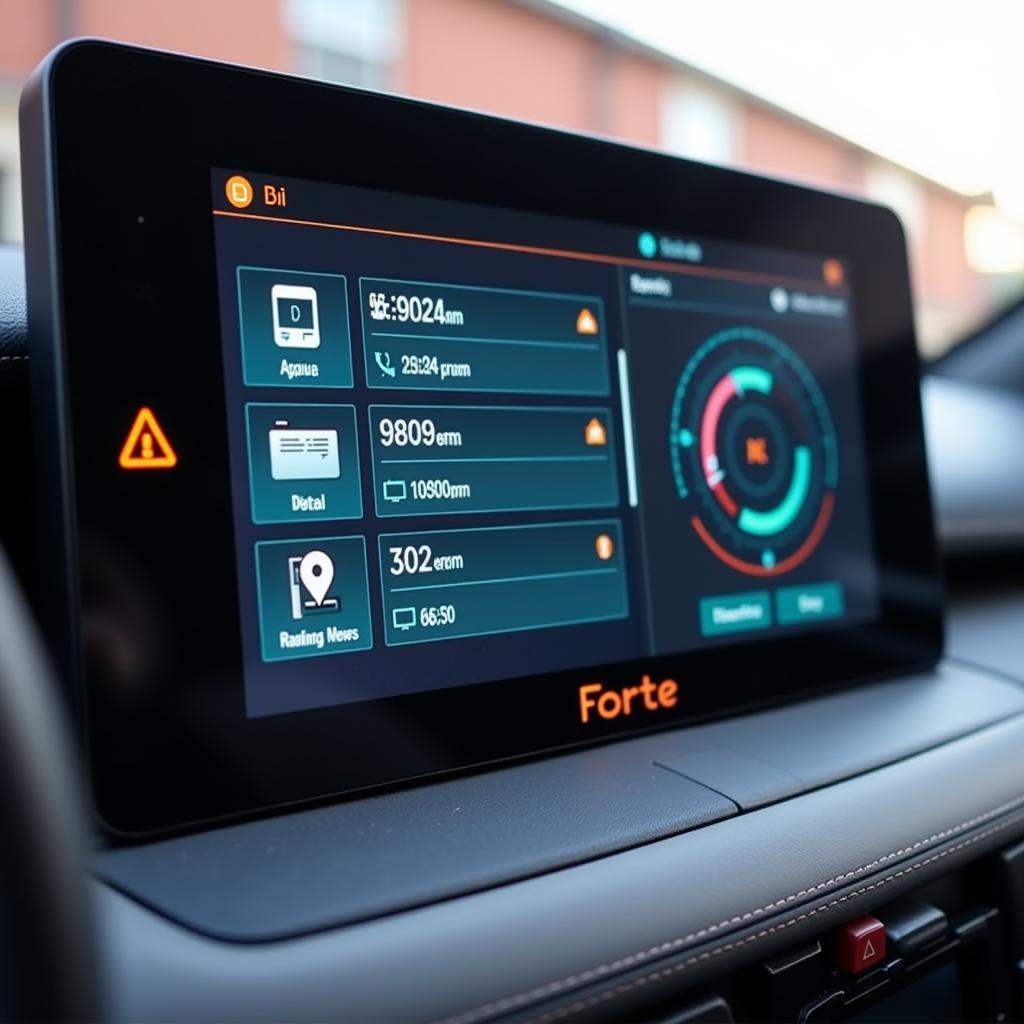Understanding Auto Diagnostic Tool Codes is crucial for any car owner, mechanic, or automotive technician. These codes, appearing as a series of letters and numbers, offer valuable insights into the health and performance of your vehicle. They are the key to efficient troubleshooting and effective repairs. Let’s delve into the world of these essential diagnostic codes. This guide is designed to demystify auto diagnostic tool codes and empower you with the knowledge to address your vehicle’s needs. You can find more information on diagnostic tools at computer diagnostic tools pc.
What are Auto Diagnostic Tool Codes?
Auto diagnostic tool codes, also known as Diagnostic Trouble Codes (DTCs), are standardized alphanumeric codes that indicate specific malfunctions within a vehicle’s systems. They are generated by the vehicle’s onboard diagnostic system, commonly referred to as the OBD-II system, in response to detected issues.
Why are Auto Diagnostic Tool Codes Important?
DTCs are essential for accurate and efficient vehicle diagnostics. They pinpoint the source of problems, eliminating guesswork and saving valuable time and money on repairs. Understanding these codes enables you to address issues promptly, preventing further damage and ensuring optimal vehicle performance. For professionals, accurate diagnostics build customer trust and enhance their reputation.
Types of Auto Diagnostic Tool Codes
There are several types of DTCs, each categorized by the first letter of the code:
- P Codes (Powertrain): These codes relate to the engine, transmission, and associated emissions systems.
- B Codes (Body): These pertain to issues within the vehicle’s body, such as airbags, power windows, and central locking.
- C Codes (Chassis): These codes address problems related to the chassis, including anti-lock brakes (ABS), steering, and suspension.
- U Codes (Network & Communication): These relate to communication issues between the vehicle’s various control modules.
How to Read Auto Diagnostic Tool Codes
Each DTC is structured to provide specific information:
- The first letter indicates the system (P, B, C, or U).
- The second digit identifies the code type (0 for generic, 1 for manufacturer-specific).
- The third digit points to the specific subsystem (e.g., fuel and air metering, ignition system, auxiliary emission controls).
- The final two digits pinpoint the specific fault within the subsystem.
Using an Auto Diagnostic Tool
An auto diagnostic tool, also known as a scan tool or code reader, is used to retrieve DTCs from the vehicle’s OBD-II system. Connecting the tool to the OBD-II port, typically located under the dashboard, allows you to access stored codes and live data, providing a comprehensive overview of the vehicle’s status. Consider the acer diagnostics tool for detailed system information.
Common Auto Diagnostic Tool Code Misinterpretations
A common mistake is assuming a DTC directly indicates the faulty component. While DTCs provide valuable clues, they primarily indicate the area of the malfunction. Further investigation is often necessary to pinpoint the exact cause.
John Smith, a seasoned automotive diagnostician, emphasizes, “DTCs are like a compass, pointing you in the right direction, not a map giving you the exact location of the problem.”
Troubleshooting with Auto Diagnostic Tool Codes
Once retrieved, DTCs should be researched thoroughly to understand their meaning and potential causes. Repair manuals, online databases, and even automotive forums can provide valuable insights. Remember to consult reliable sources for accurate information. For specific diagnostic tool inquiries, explore resources like sym diagnostic tool.
Beyond the Codes: Further Diagnostic Steps
While DTCs are invaluable, they are just the starting point. Further diagnostic steps, such as visual inspections, component testing, and live data analysis, are often required to identify the root cause of the problem.
Maria Garcia, an experienced automotive technician, advises, “Never rely solely on the code. Use it as a guide, but always verify your findings with thorough testing.”
 Inspecting Car Engine Components after Retrieving DTCs
Inspecting Car Engine Components after Retrieving DTCs
Preventing Future Issues
Regular vehicle maintenance is key to preventing many of the problems that trigger DTCs. Adhering to the manufacturer’s recommended service schedule and addressing minor issues promptly can help avoid more significant problems down the road. Effective online tools such as the google adwords words diagnostic tool can be leveraged for business development in this area.
Conclusion
Auto diagnostic tool codes are invaluable for understanding and resolving vehicle issues. Mastering the art of interpreting and utilizing these codes empowers you to maintain your vehicle effectively and minimize repair costs. Remember, accurate diagnosis is the first step towards a reliable and well-performing vehicle. For more information or support, connect with us at ScanToolUS. Call us at +1 (641) 206-8880 or visit our office at 1615 S Laramie Ave, Cicero, IL 60804, USA. We’re here to help you navigate the complexities of auto diagnostic tool codes. Banking solutions for tooling and diagnostic companies are also available – find more at tools and diagnostics company banking.

